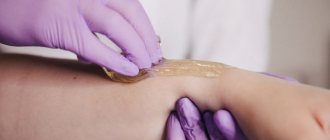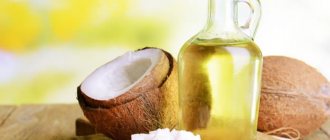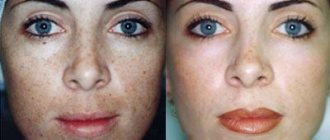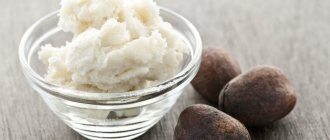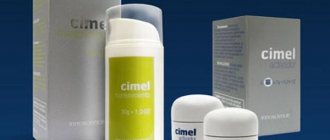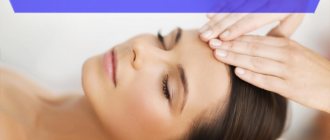It is believed that sugaring is the most painless procedure that best removes unwanted hair and after which ingrown hairs are less likely to form. But still, sometimes girls find rashes, peeling or severe irritation after sugaring. Why this happens and how to deal with it, we will tell you in this article.
Negative consequences of sugaring: the first signs of skin irritation and peeling
After sugaring, dehydration of the skin and, as a result, itching and keratinization of the upper layers of the epidermis are often observed. To prevent peeling, apply a moisturizer to the epilation site immediately after the procedure.
But irritation is most often noted after sugaring. The reasons for this may be different, but the general principle of the occurrence of a rash is as follows. The hair follicle is connected to the fat ducts, and the nerve ending is connected to them. This is why pain is felt when hair is removed.
But the worse thing is that fat gets into the place of the follicle, which provokes inflammation. It appears as red dots that usually disappear after a couple of hours, or at most a couple of days. If the inflammation does not go away within this period, you should consult a dermatologist.
If, after sugaring, the hair on the treated area begins to grow more actively, most likely, a hormonal imbalance has occurred in the body.
Consult an appropriate professional before performing the following procedure. In addition to redness after sugaring, subcutaneous ingrown hairs may appear over time. To prevent this from happening, between hair removal procedures it is necessary to treat the areas with special peelings.
Read how to deal with it and what to do if you have ingrown hairs after sugaring.
Is it possible to get infected with any diseases during salon sugaring?
In addition to caramel resin, some special tools can also be used for sugaring. For example, too short hairs remaining after the procedure are removed with tweezers, and ingrown hairs are carefully plucked out with a sterile medical needle.
Unfortunately, not all clients visit the salon in perfect health. Therefore, if all these supporting devices are not properly disinfected and sterilized, many visitors to the establishment may develop some dangerous infectious diseases.
These bacteria can enter the human body not only through dirty tools, but also through items of clothing. When multiplying, this type of staphylococcus affects quite large areas of the skin and forms boils or carbuncles.
Since microtraumas may occur during sugaring due to the individual characteristics of the skin, when using non-sterile instruments, the risk of infection through blood increases significantly.
Of course, these diseases do not depend in any way on the master’s work equipment, but nevertheless, it is quite possible to catch them in the salon.
The herpes virus is one of the insidious enemies of humanity, since its appearance is difficult to predict. Its external manifestations are quite specific: rashes on the mucous membranes of the mouth or nose, lips and other parts of the body.
As is known, the human immunodeficiency virus is transmitted through blood. There are currently no drugs that can cure this disease. Therefore, it is very important to ensure that the procedure is carried out with gloves!
You have the right to demand from the master a certificate confirming his professionalism and a certificate of health, since if sugaring is carried out incorrectly, microtraumas may appear at the site of torn hair, releasing small particles of blood, which can lead to various infections!
Thus, we can conclude that the consequences after sugaring, carried out in an unknown place, may not be as positive as we would like!
Immediately after the procedure
The main causes of irritation after sugaring
Why does skin irritation and peeling and even abscesses appear after sugaring? - unfortunately, this is a common occurrence. The reasons for this may be:
- increased sensitivity of the client's skin;
- violation of hygiene rules by both the cosmetologist and the client herself;
- non-compliance with the rules of the procedure with this sugar paste;
- Repeated application of paste to one area of skin.
If you did the procedure yourself, there are more reasons why irritation occurred. Among them, the most common is insufficient disinfection of the treatment site. Few people have enough experience to carry out this procedure correctly. But sometimes this happens when a session is conducted by an experienced specialist.
In this case, the problem may be hidden in the client’s sensitive skin or an allergic reaction to some components included in the sugar paste.
To avoid irritation and peeling of the skin in the future when performing the procedure yourself, the correct sugaring technique is necessary. Find out how to properly do sugar hair removal at home.
Contraindications for sugar depilation
In some cases, sugaring may be contraindicated. The following are general contraindications to sugar hair removal:
- Diabetes. With this pathology, there is a possibility of glucose entering the blood, which is especially important for bikini sugaring. With this type of procedure, the sugar paste comes into contact with the mucous membranes. The exceptions include pastes based on fructose or glucose. Diabetes is known to cause poor wound healing. Lack of appropriate care can lead to sepsis.
- Epilepsy. Sugaring is a painful procedure. Pain can trigger an attack.
- Cardiovascular pathologies. These include hypertension, ischemia, thrombophlebitis and varicose veins. When applying caramel, there is contact with the skin, which is undesirable in case of pathological changes in the blood vessels. Sugaring can be performed if varicose veins are at an early stage. Epilation in later stages is not permitted due to the risk of blood clots. Before manipulation, you need to consult a specialist (phlebologist).
- Skin diseases. The procedure can be performed only after treatment of fungus, eczema, psoriasis or exacerbation of herpes virus infection.
- Violation of the integrity of the skin. If there are scratches, sugaring is not recommended due to the risk of infection. Thus, contraindications for sugaring legs and other areas include scratches and cuts.
- Neoplasms in the area of influence. Mechanical impact can negatively affect formations and cause cell degeneration. An increased risk is noted if the neoplasm is malignant.
- Allergic reactions and intolerance to sugar paste components. Adverse reactions to caramel are extremely rare and are usually caused by additional components found in the composition. Allergies can be caused by honey and citric acid. It is advisable to conduct an allergy test before using a particular sugar paste for the first time, for which a small amount of the mixture is applied either to the wrist or hand. The product can be used in the absence of allergic reactions. If you are allergic to store-bought pastes, it is recommended to prepare caramel yourself.
Attention! It should be taken into account that sugar hair removal is strictly contraindicated during treatment with Accutane and Adapalene, as well as when taking hormonal drugs.
There are also contraindications that are not related to the presence of specific diseases. These restrictions are temporary. Among the contraindications not related to health are:
- Pregnancy. Before carrying out the sugaring procedure, you should focus on your general health, the presence of contraindications and the duration of your pregnancy. It must be remembered that stimulation of some points can lead to an increase in uterine tone. The threat of miscarriage or premature birth is a contraindication.
- A tan. After the manipulation, as well as a few days before it, you should not visit the solarium and expose your skin to insolation. If this contraindication is not observed, the appearance of age spots cannot be ruled out.
- Intense sports activities. After sugaring, microdamages remain on the skin. Strenuous workouts lead to increased sweating. This provokes the proliferation of pathogenic microorganisms and the risk of developing an inflammatory process.
- Menstruation. On critical days, changes in hormonal levels are observed. Against the background of menstruation, there is a decrease in the pain threshold and increased discomfort.
- Drinking alcoholic beverages. When drinking a significant amount of alcohol, the pain threshold may decrease.
Attention! Ignoring contraindications after sugaring can lead to serious consequences. These consequences usually imply a threat to the woman's health.
How to soothe your skin after sugaring
To prevent a rash that appears after sugaring, you can use special medications that relieve irritation, or use traditional methods that combat peeling and irritation.
Use of pharmaceutical products
During and after the procedure, it is recommended to use antiseptic ointments such as Miramistin, Solcoseryl, Actovegin, Chlorhexidine. They quickly stop the infection and help micro-wounds heal quickly. It is sometimes recommended to use 70% alcohol, hydrogen peroxide, or boric acid solution as an antiseptic. These products are excellent at fighting infections, but at the same time they dry out the skin. Therefore, in this case they must be abandoned.
If your skin peels off after sugaring, you can use a remedy for treating sunburn - Panthenol. It should be applied to irritated areas every three hours. If the irritation is minor, regular baby powder will help relieve it.
Traditional methods against irritation and peeling of the skin
You can use folk remedies to relieve irritation. For example, make a warm bath with a decoction or infusion of medicinal plants that relieve inflammation: celandine, string, calendula, chamomile.
You can simply lubricate the area with chamomile infusion. A tablespoon of herb is enough for a liter of boiling water. The mixture must be allowed to brew and cool. Then it can be used for wiping.
If redness appears after sugaring, you can lubricate it with homemade balm.
Take four tablespoons of any vegetable oil and mix them with a teaspoon of tea tree oil. Information .
You can make your own sugaring paste by mixing two cups of sugar, the juice of half a lemon and an eighth of a cup of water. To maintain viscosity, you can add a teaspoon of guarana gum. Lemon can be replaced with a solution of citric acid. A detailed recipe can be found in this article. Potato juice is known for its healing properties. It is enough to grate a few potatoes on a fine grater and apply the resulting pulp to the reddened areas for a couple of minutes. After this, you need to take a shower, and lubricate the treated areas with baby cream with chamomile or string extract.
If irritation does not go away for a long time after hair removal, you can apply a honey application to the reddened areas. After all, honey is an excellent antiseptic. Warm it slightly and spread a thin layer on the irritated area.
When is sugaring contraindicated?
It takes a very small, microscopic amount of sweat or blood to become infected with hepatitis C. Masters in salons use a cartridge for sugar and wax for several clients. According to this video, particles of the client’s skin and other biological media - sweat, possible blood - are rolled into a cartridge with sugar.
Therefore, the cartridge must be individual for each person. The client's name must be signed on the cartridge and the remainder on it must be used next time. In reality, several people are treated with one cartridge. Particularly “advanced” craftsmen merge the remains of several cartridges from different clients into one and manage to pass it off as a new one.
It is unlikely that you will become infected with the HIV virus; it dies in the external environment within a few minutes.
Prevention of skin irritation after sugaring: tips and recommendations
Unpleasant consequences after the procedure can be prevented. To do this, we recommend using the following tips.
Time for sugaring
Try to carry out the procedure from one in the afternoon to three. This is the period when the human body is least sensitive to pain. If the procedure is usually painful, you can take a painkiller 40 minutes before it begins. The most popular are “Pentalgin”, “Ketonal”, “Analgin”.
Preparing the skin for the procedure
To reduce pain, immediately before the procedure, the epilation site can be wiped with a piece of ice, increasing the effect of anesthesia. But if the main goal is to prevent irritation after sugaring, you need to take care of what to do a few days before hair removal. During this time, the skin must be constantly moisturized and softened. Before the procedure, you should take a bath, after which you should treat the skin with an antiseptic. It is advisable not to wipe it, but to allow all the moisture to be absorbed. Then the treated areas are sprinkled with talcum powder and the procedure begins. During the procedure, you must ensure that sweat does not protrude above the skin, constantly treating the area with talcum powder. Once in the wounds, it will cause irritation. It is recommended to treat the most delicate areas of the skin (for example, bikini area, armpits) with a soft scrub a few days before the procedure.
Watch a very useful video that simply and clearly explains how to care for your skin before and after sugaring to avoid ingrown hairs, redness and irritation.
Tips for performing sugaring
In order not to think later about how to get rid of irritation after depilation with wax or sugar, you need to fulfill simple requirements for the procedure. So, it should only be done with clean hands or wearing disposable medical gloves. The paste must first be kneaded well, warming it up to body temperature, but not allowing lumps to form. Then the clot is applied to an area sprinkled with talcum powder in advance, directing the movement against hair growth. Wait 10-15 seconds and with a sharp movement, tear off the paste in the direction of hair growth.
After completing the procedure on the intended area, treat it with an antiseptic and apply a moisturizer.
Do not use lotions or creams to avoid clogging the wounds and causing irritation. The next procedure can be carried out no earlier than 10 days later. Do not confuse sugaring and wax-sugar hair removal - these are two different procedures. The first is carried out simply with a paste, and in the second, after applying the product, a strip must be applied to the epilation site, which is then torn off. The products have different compositions. The sugar paste must be warmed to room temperature, and in the second case the product is applied hot.
Basic rules for preventing irritation and peeling
In order not to subsequently look for an answer to the question of how to quickly get rid of irritation after sugaring, you must adhere to the rules for preventing it. Before the procedure, treat the epilation area with an antibacterial agent, lightly steam it, then wipe it again with an antiseptic. This will prevent infection from getting into the wounds and subsequent inflammation.
You should not wear synthetic clothing after the procedure. Since it does not allow air to pass through well, the body sweats more intensely, sweat gets into the wounds and causes irritation. Clothing made from natural fabrics will reduce the likelihood that irritation will appear after sugaring, and you will not have to urgently decide what to do to remove it.
Every week, light peeling should be done on the treated area. This procedure prevents the development of ingrown hairs and abscesses. To be on the safe side, you can use medications that slow down hair growth.
Also, you should not visit a bathhouse, sauna, solarium, or swimming pool within 24 hours after the procedure. Otherwise, an infection may get into wounds that have not yet healed and cause inflammation.
In summer, try to apply sunscreen for three weeks after the procedure.
Is sugaring harmful to health?
Sugaring refers to a method of hair removal. This means that during the manipulation process, unwanted hairs are removed along with the root. Sugaring technology ensures long-lasting effectiveness. Hair appears after 2-4 weeks. For quite a long time, the skin retains its smoothness if the procedure technology is followed.
The effectiveness of sugaring depends on compliance with the requirements of the preparatory stage. Approximately one day before the procedure, it is necessary to carry out peeling, during which dead skin particles are removed. Thus, scrubbing promotes more reliable adhesion of sugar paste and hairs.
The procedure is carried out with a hair length of at least 3 and maximum 7 mm. Otherwise, the procedure may be ineffective. Sugar paste will have to be applied several times, which increases the risk of skin irritation. Long hairs are prone to breaking. This can cause their ingrowth, accompanied by an inflammatory process.
The choice of adequate paste is essential. It should be selected, paying attention to the area of influence, the temperature of the room and the master’s hands.
Important! Sugaring paste can have different textures. For manipulation, soft, universal and dense pastes are used.
Classic sugar paste consists of water, citric acid or juice and sugar. You can prepare it yourself or purchase it in specialized stores. Often caramel contains additional components, such as herbal extracts or honey, which can cause allergic reactions. Side effects after sugaring are often encountered when using toothpaste containing artificial additives.
Can you be allergic to sugaring?
Since the composition of the paste for this procedure varies, sometimes an allergy to sugaring may occur. This happens when the client has an intolerance to any of the components of the product. Therefore, if there is any suspicion of such reactions, a preliminary test should be carried out on a sensitive area of the skin.
The procedure is definitely contraindicated for people suffering from diabetes, no matter what stage of development the disease is at.
Sugaring is the most painless procedure for removing unwanted hair. But even after it, irritation and dry skin may occur. To reduce the likelihood of such unpleasant consequences, it is important to take preventive measures before and after the procedure, and most importantly, entrust it to a specialist.
Types and techniques of sugaring
When removing hair with sugar, various types of pastes are used:
- Soft, elastic. This paste is used in cosmetology for removal on large areas of the body (abdomen, limbs).
- Medium consistency. It is considered a universal composition and is used when sugaring is performed for men or women.
- Thick consistency. Also used on any part of the body, including the underarm area, bikini area and the skin above the upper lip.
- Very thick consistency. This type of paste is used to remove unwanted hair on particularly sensitive areas (genitals, axillary area, area above the upper lip).
Sugaring refers to a procedure that is performed at home. This method involves using sugar mass prepared with your own hands.
Depending on the technique of sugaring, the procedure is divided into the following forms:
- manual (classical);
- bandage (spatula);
- manual with applications.
The manual sugaring technique uses a paste of any consistency. The sugar mass is applied by hand to the area of future processing, after which it is torn off with a sharp movement. It is important that the paste is distributed strictly over the area in which hair needs to be removed.
Bandage sugaring is a procedure that is similar in technology to waxing. In this case, sugar paste is applied to the skin using a spatula. Next, special strips (bandage) are applied.
The spatula sugaring technique is used when there is a need to remove long hair from large areas of the body. At the same time, the method of performing manipulations does not differ from other methods of hair removal with sugar paste. Also, the bandage sugaring technique is used to get rid of vegetation in hard-to-reach places.
Applications are used in two cases:
- high ambient temperature;
- with increased sweating in humans.
Manual sugaring of this type involves the use of a paste of a very dense consistency. The applications are left for 2 minutes and then torn off.
What to do if allergic reactions occur?
An allergic reaction may occur in people who are sensitive to fragrances and dyes contained in some sugaring pastes. If you are intolerant to citrus fruits, this method of hair removal is allowed to be used, since the citric acid, which is part of the paste, is completely neutralized in the technological cycle.
If signs of allergy appear (rash, redness, severe itching), it is recommended to change the sugar paste. To relieve swelling and itching, you can take antihistamine tablets (Loratadine, Diazolin). If symptoms persist or worsen after a day, you should consult a doctor.
Sterilization
To avoid thrush after depilation, you need to take a responsible approach to choosing a specialist and find out in advance what tools are used for the procedure and under what conditions sugaring is performed.
During sugaring of the bikini area, hair is pulled out by the roots. As a result, many small wounds appear on the skin. If they get infected, an inflammatory process will occur. Therefore, before starting and at the end of the procedure, the specialist must treat the skin with an antiseptic, for example, alcohol lotion.
During the procedure, the woman undresses completely and lies down on the couch, as in a gynecologist’s office. Be sure to place a disposable napkin under yourself, which is subsequently thrown away. If the specialist laid out a reusable diaper or sheet, or did not cover the couch with anything at all, this is very bad.
During the procedure, drops of vaginal discharge may fall onto the surface of the couch. If the next client comes into contact with this secretion, she may become infected with thrush or an STI. And given that many sexually transmitted diseases are asymptomatic at first, it will be almost impossible to suspect a deviation.
During sugaring, the specialist must wear disposable gloves. Moreover, they must be put on immediately before the procedure and nothing except the sugar paste and the patient’s skin should be touched. If the technician is not comfortable wearing gloves, it is better to contact another specialist. Fungal spores may remain on the skin and under the nails, which can lead to thrush infection.
Some hair removal specialists apply sugar paste not with their hands, but with a spatula. If the spatulas are plastic or wooden, they should be disposable and thrown away after each client. Metal spatulas are sterilized.
The conditions in the room in which sugaring is performed are also important. The room must be clean, not dusty, all tools and materials must be kept clean and in order. Drafts should not be allowed in the room, as a naked client can easily become hypothermic, which will provoke thrush.
If the room is dusty and dirty, the tools are on a dusty shelf, then it is better to refuse such a master. Pathogenic microorganisms can live for a long time in dust, on the surface of a table, or on a door handle. If you imagine the flow of people who come into contact with these objects every day, you can guess that the probability of infection is high.
The cosmetology office where depilation is performed must be washed and ventilated daily. After each visitor, the couch should be treated with an antiseptic, as well as reusable instruments. It is very good if the office has an ultraviolet lamp for quartzing.
Which depilation method to choose
In addition to sugaring, there are several other ways to get rid of unwanted hair:
- hot wax;
- mechanical epilator;
- laser hair removal.
Each method has its own advantages and disadvantages compared to sugaring.
Which is better: sugaring or waxing?
Unlike wax hair removal, sugar mass can remove even very short hairs, up to 5 mm long. This is explained by the fact that the paste envelops the entire hair completely, while the wax covers only part of the hair directly above the skin. Therefore, for waxing, the hair length must be more than 5 mm.
Hair removal using the sugar method is performed in one step; when using wax, several approaches are required. The pain during sugaring is much weaker and disappears completely after a few procedures. Sugar paste does not require heating like wax, so there is no risk of burns. Sugar paste can be simply washed off with water without using special chemicals.
Note ! The caramel mass is applied against hair growth, and not in the direction, as with wax hair removal. The absence of the risk of thermal burns, as with waxing, makes sugar hair removal a more suitable method for sensitive skin.
Comparison of waxing and sugar hair removal
Which is better: epilator or sugaring
About epilator or sugaring pros and cons further. Both methods leave the skin perfectly smooth. The epilator quickly removes hair without any preparation. No skills are required to use it, just hold the device in the correct position. The compact size allows you to take it with you on trips. The duration of the effect is from 1 to 4 weeks. Despite all the advantages, the epilator is inferior to sugaring in several respects:
- ingrown hair;
- pain when using the device without a cooling attachment;
- not suitable for sensitive skin, face and bikini areas;
- high price.
Advantages and disadvantages
To make sure that sugar depilation is effective, you need to find out the pros and cons of sugaring.
Advantages of sugaring:
- suitable for delicate, sensitive skin;
- allows you to remove hairs on the face and eyebrow area;
- does not create skin irritation after the procedure, provides an exfoliating effect;
- minimal pain that disappears with subsequent procedures;
- natural composition does not cause allergies;
- there is no danger of getting a thermal burn, since the paste does not require heating;
- Even short hairs, up to 5 mm long, are removed;
- there are no ingrown hairs, since they are removed entirely with the bulb, and do not break off;
- nourishes the skin, making it soft and smooth;
- washes off with plain water;
- Over time, the amount of unwanted hair decreases;
- low cost of depilation.
The effectiveness of the sugaring procedure combined with the most gentle effect makes this method one of the most popular. The benefits of sugaring also include the ability to make the paste yourself and perform depilation at home. The mixture is prepared from 10 tablespoons of sugar, 1 tablespoon of water, 1.5 teaspoons of citric acid.
Disadvantages of the sugar method:
- less suitable for leg depilation due to the large treatment area;
- does not always remove rough hairs after shaving with a razor.
Side effects
If you neglect contraindications for sugaring and do not follow the recommendations of specialists, the following side effects may occur after the procedure:
- skin irritation;
- inflammatory processes;
- formation of pigment spots;
- microscopic injuries, wounds;
- ulcers, erosive inflammation;
- hematomas, bruises;
- allergic rashes;
- pustules;
- burns;
- ingrown hairs.
If the skin is injured and hygiene rules are not followed, the body may become infected. You can avoid unpleasant consequences if you first consult with a specialist.
